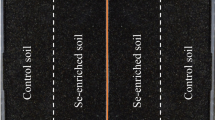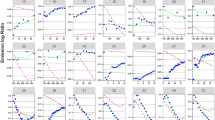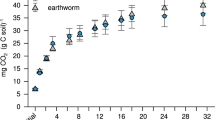Abstract
THIS communication reports the toadstool Amanita muscaria as a selenium accumulator. It is the first reported from the humid regions, on acid soil, or from among the cryptogams1.
This is a preview of subscription content, access via your institution
Access options
Subscribe to this journal
Receive 51 print issues and online access
$199.00 per year
only $3.90 per issue
Buy this article
- Purchase on Springer Link
- Instant access to full article PDF
Prices may be subject to local taxes which are calculated during checkout
Similar content being viewed by others
References
Anderson, M. S., Lakin, H. W., Beeson, K. C., Smith, F. F., and Thacker, E., Agric. Handbook, No. 200 (U.S. Dept. Agric, Washington, 1961).
Watkinson, J. H., Trans. Joint Meeting Comm. Fourth and Fifth Intern. Soc. Soil Sci., New Zealand, 149 (1962).
Cannon, H. L., Soil Sci., 96, 196 (1963).
Bertrand, D., Amer. Museum Nat. Hist. Bull., 94, 409 (1950).
Author information
Authors and Affiliations
Rights and permissions
About this article
Cite this article
WATKINSON, J. A Selenium-accumulating Plant of the Humid Regions: Amanita muscaria. Nature 202, 1239–1240 (1964). https://doi.org/10.1038/2021239a0
Issue Date:
DOI: https://doi.org/10.1038/2021239a0
This article is cited by
-
Mercury and selenium in developing and mature fruiting bodies of Amanita muscaria
Environmental Science and Pollution Research (2021)
-
A role forAmanita muscaria L. in the circulation of cadmium and vanadium in a non-polluted woodland
Environmental Geochemistry and Health (1987)
-
Selenium content of mushrooms
Zeitschrift f�r Lebensmittel-Untersuchung und -Forschung (1977)
Comments
By submitting a comment you agree to abide by our Terms and Community Guidelines. If you find something abusive or that does not comply with our terms or guidelines please flag it as inappropriate.



